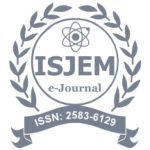Cooking Performance and Sensory Characteristics of Gluten-Free Pasta Enriched with Indigenous Ingredients
- Version
- Download 14
- File Size 478.25 KB
- File Count 1
- Create Date 11 June 2025
- Last Updated 11 June 2025
Cooking Performance and Sensory Characteristics of Gluten-Free Pasta Enriched with Indigenous Ingredients
Authors:
Verma, Anisha1 and Mishra, Jaya 2
Associate Professor1 and Research Scholar2
Department of Food and Nutrition, College of Community Science,
Acharya Narendra Deva University of Agriculture &Technology, Kumarganj, Ayodhya
Corresponding Author: Dr. Anisha Verma
Associate Professor1 and Research Scholar2
Department of Food and Nutrition, College of Community Science,
Acharya Narendra Deva University of Agriculture &Technology, Kumarganj, Ayodhya
Email: aniom30@gmail.com
Abstract
The study titled “Cooking Performance and Sensory Characteristics of Gluten-Free Pasta Enriched with indigenous Ingredients” aimed to develop a gluten-free pasta using locally sourced flours and to evaluate its cooking qualities, sensory attributes, nutritional composition, and cost. Pasta was formulated using varying proportions of rice flour, corn flour, defatted soy flour, and guar gum flour across three treatments: T1 (65:10:20:5), T2 (50:10:30:15), and T3 (35:10:40:15), with a standard wheat-based pasta serving as the control (T0). Gluten content was assessed using the AACC Method 38-10 (2000), while cooking time and cooking loss were determined using AACC Method 66-50 (2000). Sensory evaluation was conducted using a 9-point Hedonic Scale.Results indicated that the gluten-free formulations contained no detectable gluten. Cooking time and cooking loss were reduced in gluten-free variants compared to the control. Among all samples, T2 achieved the highest sensory scores in color, texture, flavor, and overall acceptability. The cooking loss showed significant gradual decrease along with the addition of rice flour, gaur gum flour, defated soyaflour and corn flour . Nutritional analysis revealed significantly higher levels of protein, fiber, energy, vitamins, and minerals in the gluten-free pasta, particularly T2, when compared to the control. The cost per 100g of raw ingredients ranged from Rs. 6.00 for the control to Rs. 7.77 for T3.The study concludes that gluten-free pasta can be effectively prepared using rice flour, corn flour, defatted soy flour, and guar gum flour, with T2 offering the best balance of sensory quality, nutrition, and affordability.
Key words – Gluten, pasta, cooking quality, sensory quality, Nutritional composition, defatted soy flour, guar gum.
Download
